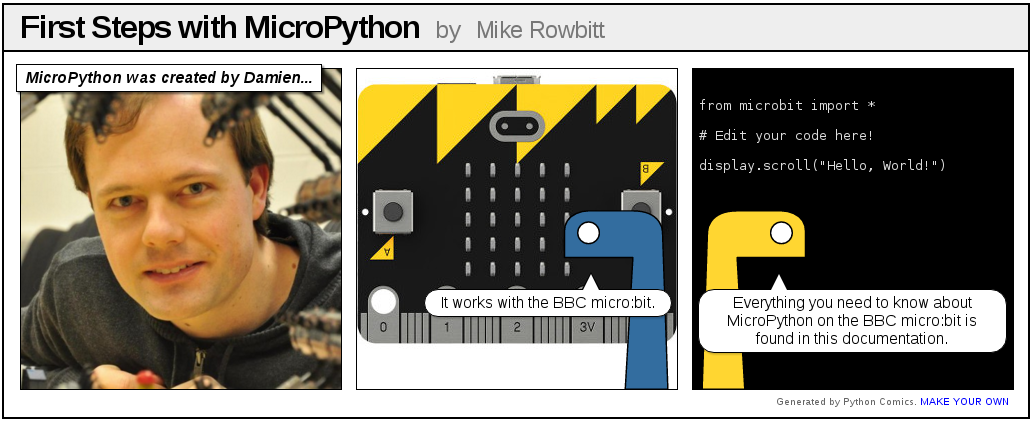MicroPython on the BBC micro:bit
Python is possible in the micro:bit thanks to Damien George’s MicroPython, and all of its contributors (one, two, three). For a history of how this came to be, Nicholas Tollervey also has a great post on his blog: The Story of MicroPython on the BBC micro:bit

These are useful links to find out how to use MicroPython on the micro:bit:
SoundEffect Information:
The micro:bit V2 MicroPython repository: https://github.com/microbit-foundation/micropython-microbit-v2
Quick things to do with the micro:bit
To “Reference” left side bar in the editor is the best place to find out more about the micro:bit features in MicroPython. But for a quick , these are a couple of quick snippets that output sound or images.
Display one of the built-in images (more info here):
from microbit import *
display.show(Image.HAPPY)
Play one of the built-in sounds (full list here):
from microbit import *
audio.play(Sound.HAPPY)
Play one of the built-in music tunes:
import music
music.play(music.BIRTHDAY)
Make your own music tune (more info here):
import music
tune = ["C4:4", "D4:4", "E4:4", "C4:4", "C4:4", "D4:4", "E4:4", "C4:4",
"E4:4", "F4:4", "G4:8", "E4:4", "F4:4", "G4:8"]
music.play(tune)
Speak (more info here):
import speech
speech.say("Hello, World")
Create your own sounds!
More info here: Preview of the proposal for the SoundEffect documentation
from microbit import *
audio.play(audio.SoundEffect(
freq_start=400,
freq_end=2000,
duration=500,
vol_start=100,
vol_end=255,
waveform=audio.SoundEffect.WAVEFORM_TRIANGLE,
fx=audio.SoundEffect.FX_VIBRATO,
shape=audio.SoundEffect.SHAPE_LOG
))